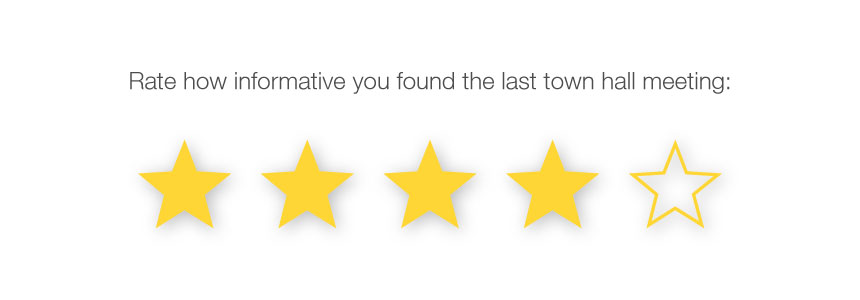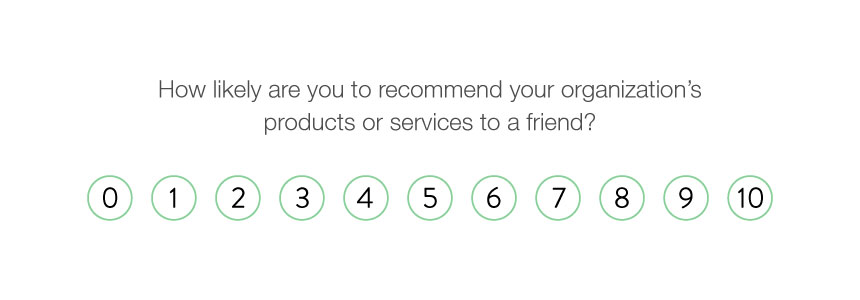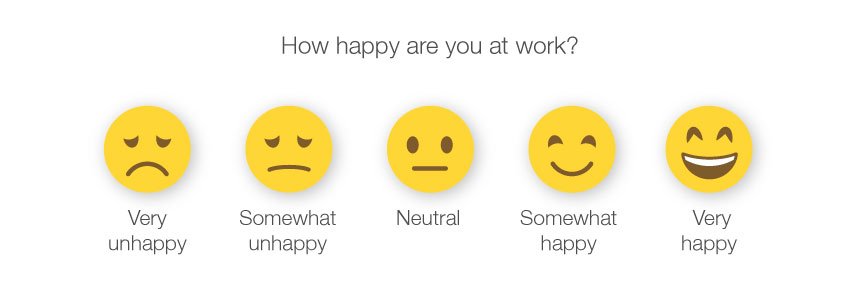Get Your Employee Communications in Line: Why Pulse Surveys Are an Internal Communicator’s Best Friend

When you see the words “employee survey”, do your eyes roll back into your head?
Like you, we’ve got mixed feelings about employee surveys.
On the one hand, we know they’re absolutely necessary.
As an internal communicator, you need to know what’s going on in your company. You want to make sure your employees are happy and engaged. And a well-designed survey can give you invaluable data and feedback that can and will shape your company from the inside out.
On the other hand, employee surveys can be such a pain.
Download our Quickstart Guide to Pulse Surveys here.
You may have noticed that annual surveys in particular have become a popular punching bag for internal communicator and HR influencers. Everyone is claiming the annual survey is dead, should be dead, is dying, or should rise from the dead.
That’s just too many death analogies to be good.
And they’re not wrong: surveys that take way too long to complete and don’t lead to any actionable results are a waste of everyone’s time — employees, leadership, and management. If poorly designed, surveys can even lead to worse employee engagement outcomes and further employee disconnect.
And surveys are really easy to muck up:
If your employee surveys are poorly designed or written, you won’t get good data. And if you’ve got crappy data, well, you won’t get any useful insights.
If they are too long, people will either get bored and give thoughtless answers just to finish the survey quickly — or they just won’t bother to begin with.
And, probably worst of all, if employees don’t see real results after filling out that dreadful 20+ page survey, they’ll think it’s a useless tool. They’ll also become annoyed about inaction or the perceived apathy from management.
It’s a lose-lose-lose situation.
Introducing the internal communicator’s new best friend: Pulse surveys
Wait a minute.
We know what you’re thinking: Are we suggesting you remedy your survey problem with more surveys?
Well, yes. Sort of. Just bear with us.
Pulse Surveys are different. They’re faster, smarter, better, and infinitely cooler than your average survey. They can increase and measure engagement in a split second. They’re sleek, exciting, and relevant.

Most importantly, they can do what no other survey can: provide actionable insight with a single question.
Okay, but what exactly is a pulse survey?
We’re glad you asked.
Pulse surveys are super short surveys focused on a single specific area for improvement. They are used to help monitor employee happiness, understanding, and engagement.
Some people might tell you that a pulse survey can be anywhere from one to ten questions, so long as the survey takes less than four minutes to complete in its entirety.
We, on the other hand, are huge proponents of the one-question pulse survey.

Why?
With packed schedules and competing priorities, a lot of employees are strapped for time. And often, a survey can just feel like another item on their never-ending to-do list.
With one-question pulse surveys, you can make things easy for your people and keep feedback focused for faster, more accurate responses — and take immediate action.
Why should I use pulse surveys for internal communications?
1. Increase engagement with pulse surveys
Generally speaking, most people are a bit “meh” about their jobs. Gallup reports that only 20% of the global workforce is engaged in their work and workplace.
And not to point out the obvious or anything, but “meh” is not good for anybody — companies with engaged employees outperform their peers by 147% in earnings per share.
Employee engagement is, therefore, a good thing — not just for the company’s bottom line, but also for employees’ enjoyment and fulfillment.

Pulse surveys give you an easy way to:
Check in on your employees and see how engaged they are with timely insights and feedback.
Gather data on sentiment, engagement, and relevant topical issues so you can take action quickly.
Cultivate a culture of open communication.
Show employees you care about what they think and how they’re doing.
2. Measure success of complex changes and initiatives with pulse surveys
With pressure to respond to new findings, new structures, a shifting economy, automation, and the like, organizations are in constant flux.
These changes can leave employees in various states of transition, disillusionment, insecurity, and without a real sense of clarity about what is going on in the company. When employees are faced with frequent organizational change, internal communicators should seek feedback and collect data often.
Pulse surveys can help catch problem issues before they become overwhelming. They can also measure the impact of change over time so you can actively respond and support employees during change.
3. Engage Gen Z with pulse surveys
Companies are now employing a generation that has grown up with smartphones and social media as their main forms of communication. That’s right — Gen Z has never lived in a world without constant connectivity, which makes them even less likely to engage with traditional long-form surveys.
This tech-savvy workforce is plugged into platforms like Instagram, YouTube, and TikTok — they expect communication to be fast, constant, and at their fingertips. Asking them just once a year how they’re doing is not even close to enough. And when it comes to the workplace, Gen Z wants to communicate often and easily, and will be the first group to pick up and leave if they are disengaged.
Pulse surveys in email help you do more with less
But if you have to send more emails asking employees to engage with more content, it’s going to backfire in a big way, isn’t it?
That’s why we love embedded pulse surveys in employee emails. Include them at the end or beginning of a newsletter or regular email and you can collect more important data without sending more emails or bothering anyone.
People will be glad you respected their precious inbox space. They’ll also be excited that you asked for their feedback, and over-the-moon that you’ve made it so easy for them.
Embed your employee pulse surveys and you’ll get employees engaged, receive valuable feedback, and go down in office history as the internal communicator that finally found a fun alternative to boring, outdated, and poorly executed annual surveys.

It’s a win, win, win.
Watch our webinar on employee surveys:










